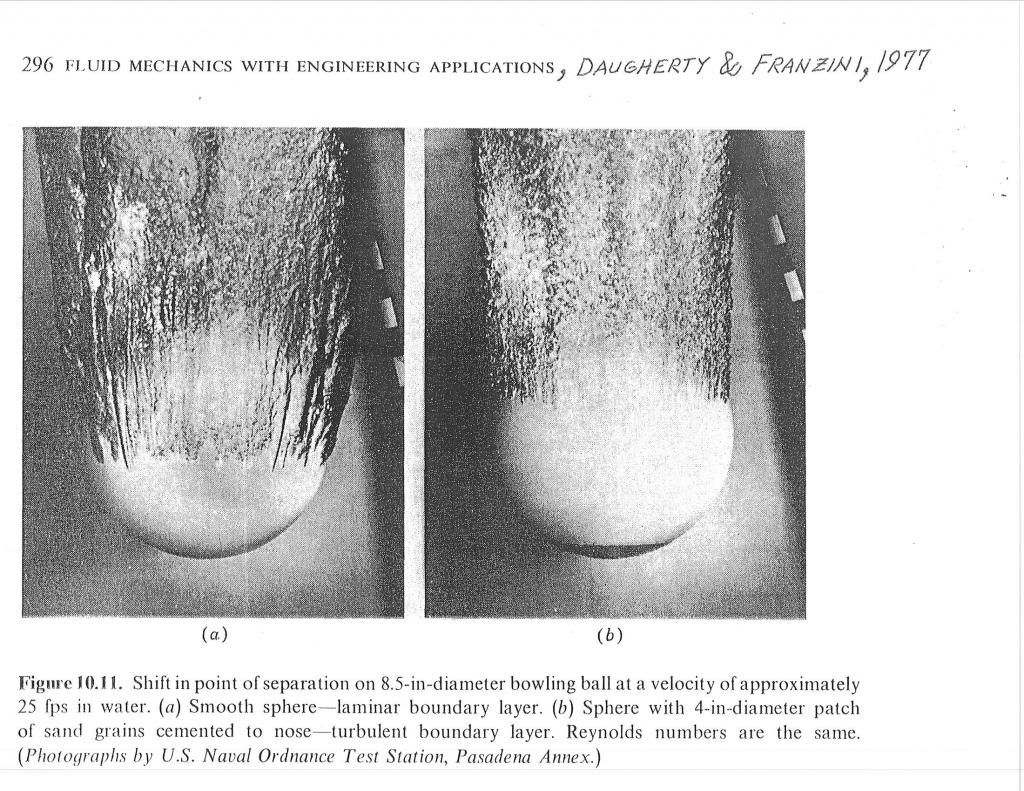Quote:
Originally Posted by gone7

See response at the dimples thread. But basically, what works is the proof, and theories are not proof of anything and never have been.
|
Boundary layer theory is what a student is required to study,which is derived from the results of laboratory experiment and empirical results.There is nothing theoretical about it.
What is known,is that automobiles operate in a fully turbulent boundary layer flow regime and separation is already minimized.
The dimples could have only acted as a crude vortex generators which COULD have helped aft-body flow remain better attached over the backlight and onto the boot.
But if you're going to add VGs,there are many designs which would be better performing than dimples.Dimples are chosen for golf balls because they cannot be knocked off and they always present the same 'face' to the air,regardless of the ball's orientation to the atmosphere.
Here,in the upper two images are smooth spheres,at top,with sub-critical Reynolds number and large wake and drag,underneath,with super-critical Reynolds number,smaller wake,and smaller drag.
With spheres as large as a car,the flow would be super-critical by 20-mph.The sphere could be as smooth as glass and it would still be super-critical.

With small,smooth spheres, at low speed,you can force the lower drag by introducing artificial roughness.Here,the US NAVY has glued grains of sand to the leading edge of a smooth bowling ball,and in side-by-side comparison,you can see the modified attached flow,smaller wake (less drag).

The Ford Taurus would have enough critical roughness for it's size,that it would be super-critical by 20-mph.Dimpling the car wouldn't improve upon that.
However,the dimpling COULD behave as a very crude VG,energizing the boundary layer ahead of the backlight header,and this WOULD help for flow attachment,whereas without the dimpling,would suffer worse separation and higher drag.